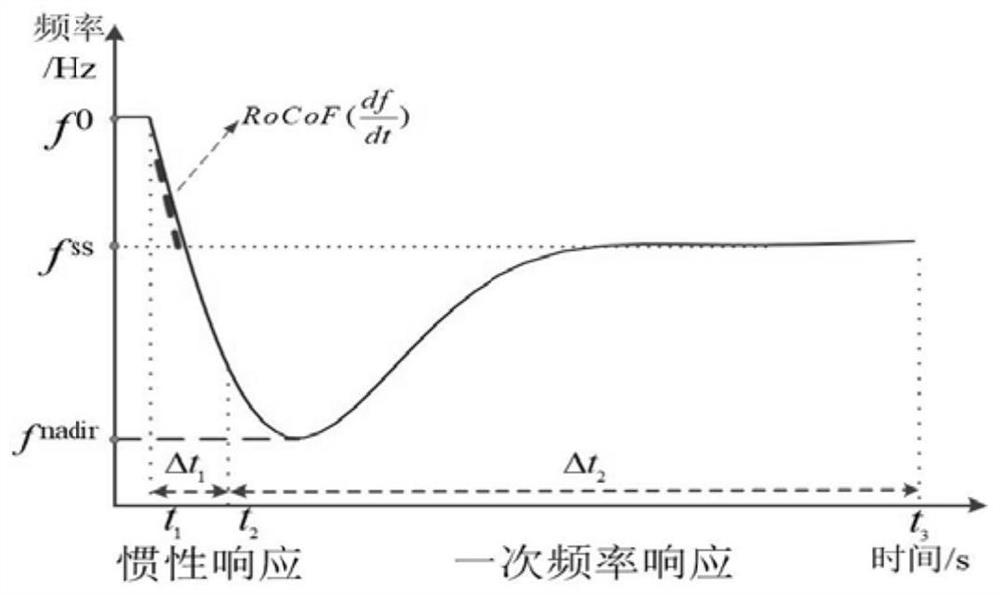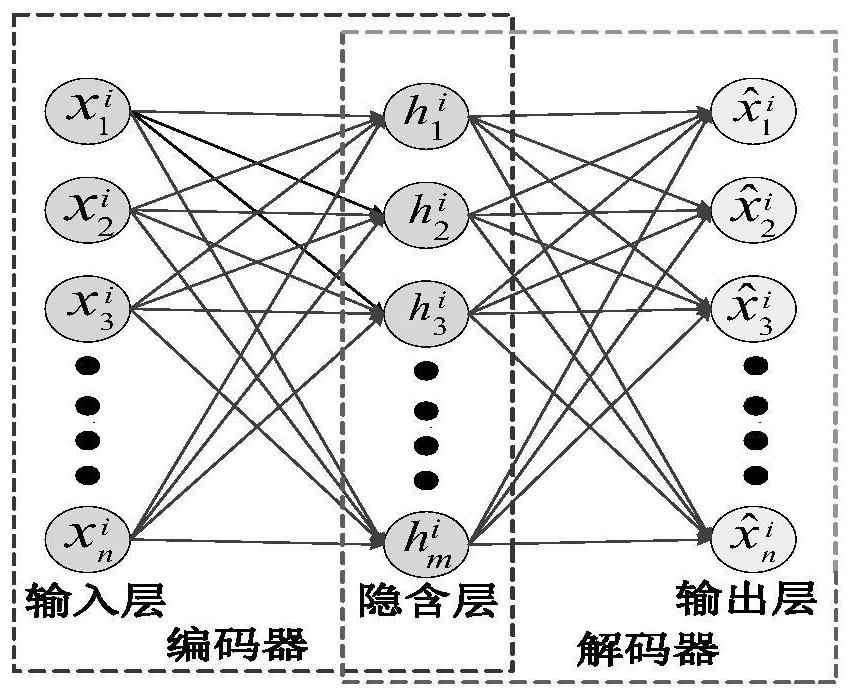A Transient Frequency Acquisition Method Based on Stacked Denoising Autoencoder
A noise reduction automatic encoding and transient frequency technology, applied in the electric power field, can solve problems such as difficult to comprehensively judge transient frequency stability, difficult to map input-output relationship, over-fitting or under-fitting problems, etc., to achieve good Pan-China capabilities and the effect of improving evaluation accuracy
- Summary
- Abstract
- Description
- Claims
- Application Information
AI Technical Summary
Problems solved by technology
Method used
Image
Examples
Embodiment Construction
[0097] The present invention will be further described below in conjunction with examples.
[0098] Such as figure 1 Shown is the dynamic change curve diagram of the system frequency under the condition of sudden load increase (ΔPL>0), and the present invention adopts the extreme value frequency f nadir , maximum rate of frequency change RoCoF, quasi-steady-state frequency f ss Measure frequency performance under active power disturbance events.
[0099] Therefore, the samples collected by the present invention include the extremum frequency f nadir , maximum rate of frequency change RoCoF, quasi-steady-state frequency f ss and power characteristic parameters. Among them, the power characteristic parameter is related to the extreme frequency f nadir , maximum rate of frequency change RoCoF, quasi-steady-state frequency f ss For closely related power parameters, the present invention selects a series of power parameters as feature categories, and then calculates the contr...
PUM
 Login to View More
Login to View More Abstract
Description
Claims
Application Information
 Login to View More
Login to View More - R&D
- Intellectual Property
- Life Sciences
- Materials
- Tech Scout
- Unparalleled Data Quality
- Higher Quality Content
- 60% Fewer Hallucinations
Browse by: Latest US Patents, China's latest patents, Technical Efficacy Thesaurus, Application Domain, Technology Topic, Popular Technical Reports.
© 2025 PatSnap. All rights reserved.Legal|Privacy policy|Modern Slavery Act Transparency Statement|Sitemap|About US| Contact US: help@patsnap.com



